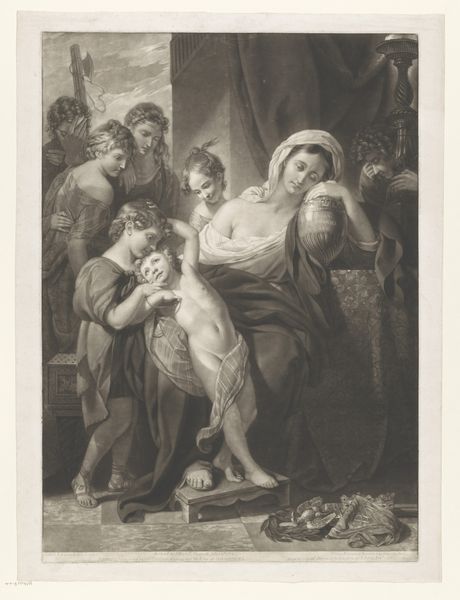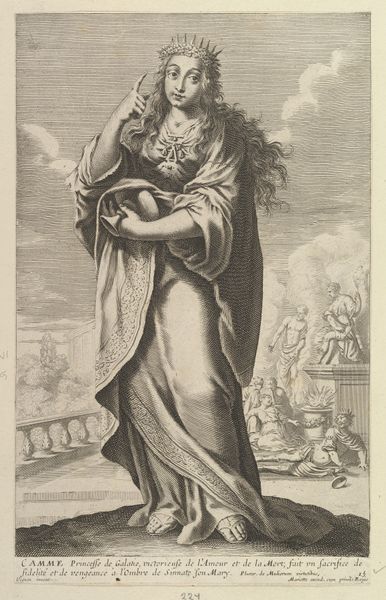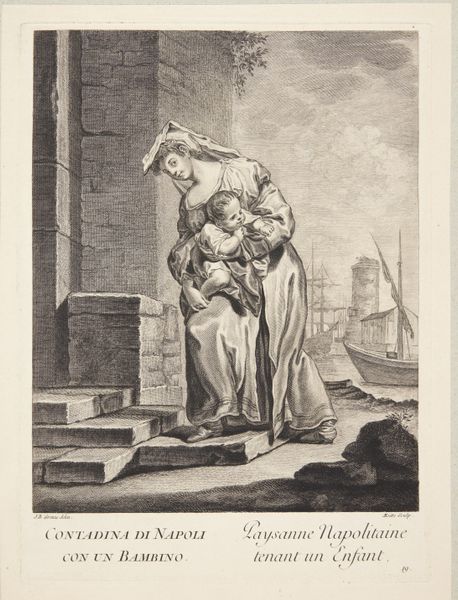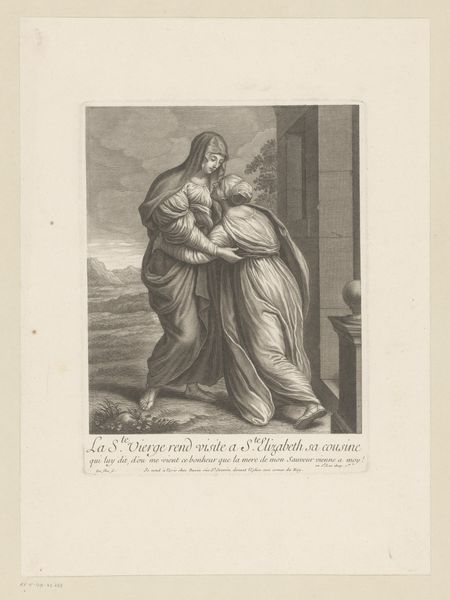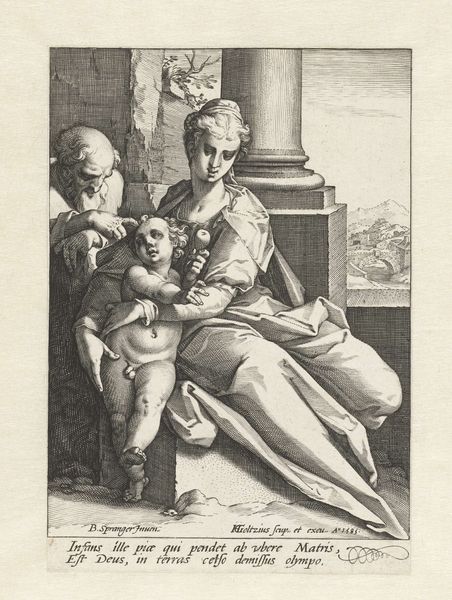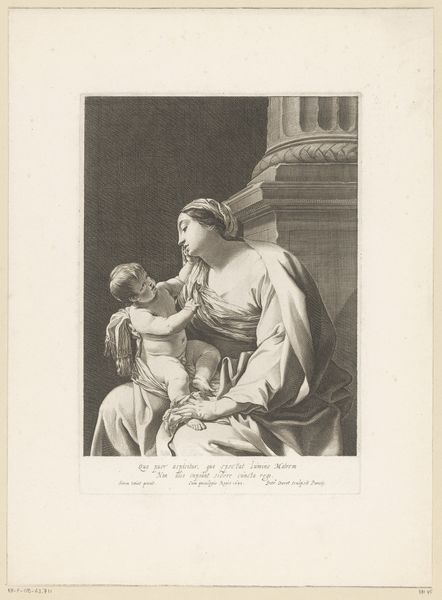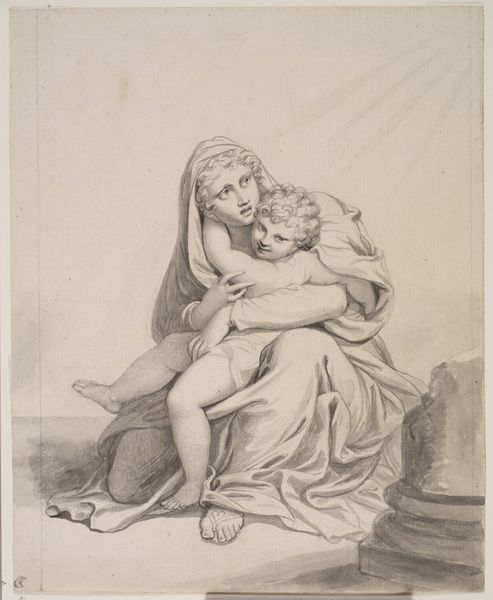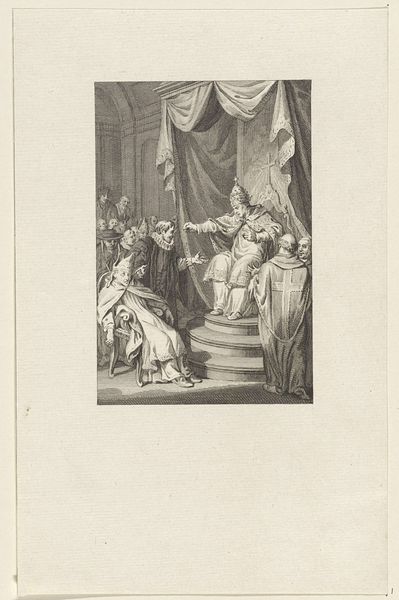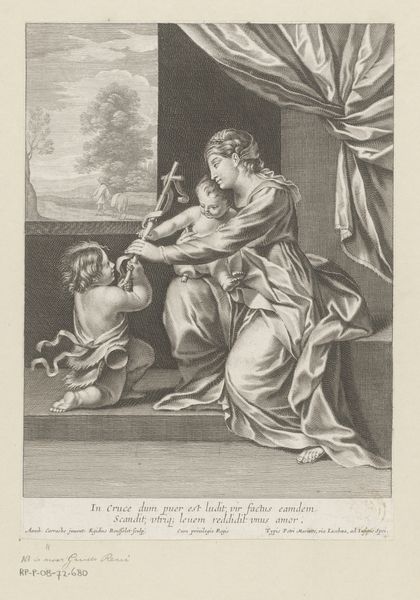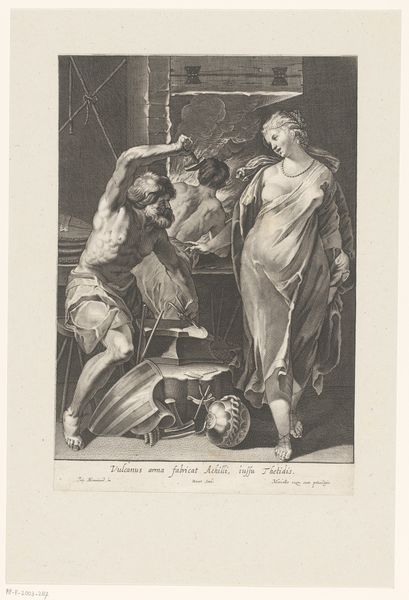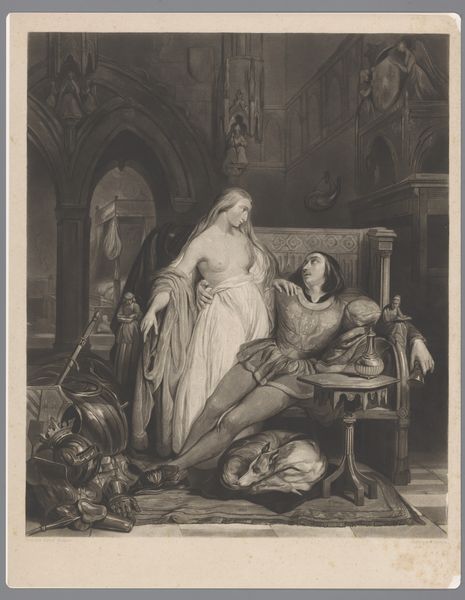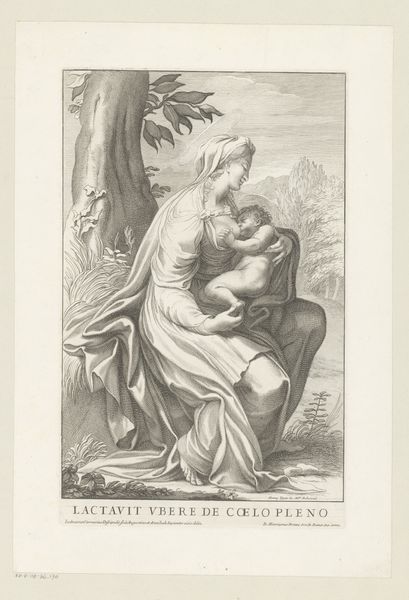
drawing, print, engraving
#
drawing
# print
#
caricature
#
classical-realism
#
figuration
#
child
#
history-painting
#
engraving
Dimensions: Sheet: 12 1/4 × 8 7/16 in. (31.1 × 21.4 cm)
Copyright: Public Domain
Editor: So, this is "Virgin and Child," an engraving from between 1820 and 1859 by Cesare Ferreri. There's something so… reserved about it. It feels like the artist wanted to depict the ideal of motherhood more than a real person. What's your take on this piece? Curator: It's interesting you pick up on that feeling of idealized motherhood. Think about the historical context: this work emerges during a period grappling with prescribed gender roles and the idealization of women, particularly in relation to domesticity and piety. How might this image reinforce or perhaps even subvert those expectations? Editor: I see what you mean. The Virgin is serene, almost detached. But doesn't that detachmen, in a way, uphold the societal expectations of women being passive and virtuous, more like symbols than individuals? Curator: Exactly! It’s crucial to analyze how the artist deploys these visual tropes. Is Ferreri simply reproducing a conventional image, or are there subtle nuances that hint at a more complex reading? Notice the softness in the engraving – does it soften or empower her form, and does it have some bearing on the historical idealization of femininity? Editor: The child, too, seems like a symbol rather than a real infant. Is that deliberate? Curator: Undoubtedly. Consider how the symbol of the Christ Child, presented with an air of divinity, also elevates and sanctifies the role of the Virgin Mary. But isn't there also a visual tension here? While idealized, there is this very tender scene unfolding. This duality provides room for discussion around both the sacred and social implications within representations of women at the time. Editor: I hadn’t considered the visual tension before. It gives the work much more complexity. Curator: It encourages us to consider art’s participation in shaping ideologies, even in seemingly simple or devotional imagery. And even our contemporary interpretation is another layer to unpack. Editor: Definitely gives you something to consider beyond the image itself. Thanks.
Comments
No comments
Be the first to comment and join the conversation on the ultimate creative platform.
